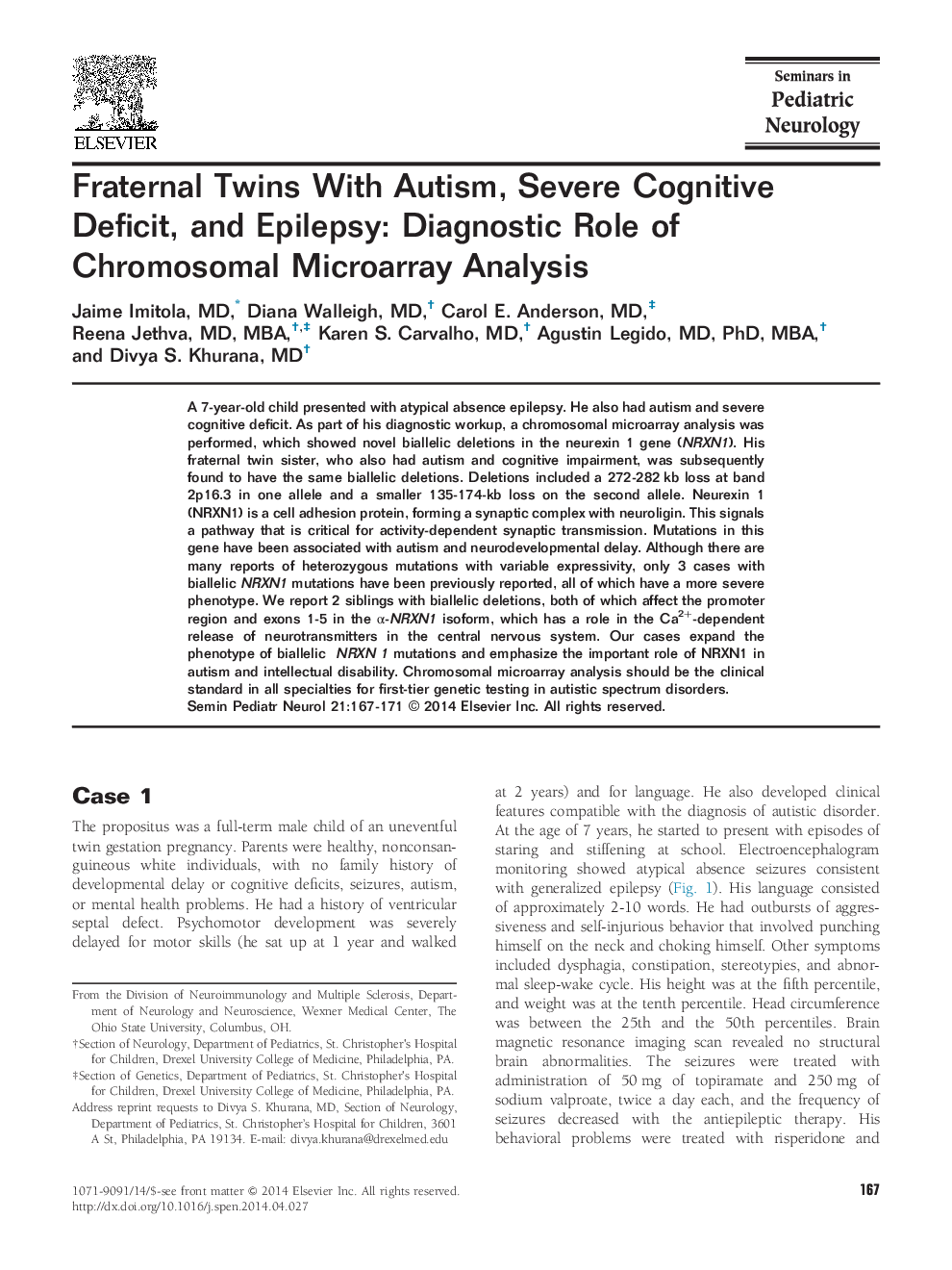| Article ID | Journal | Published Year | Pages | File Type |
|---|---|---|---|---|
| 3090838 | Seminars in Pediatric Neurology | 2014 | 5 Pages |
A 7-year-old child presented with atypical absence epilepsy. He also had autism and severe cognitive deficit. As part of his diagnostic workup, a chromosomal microarray analysis was performed, which showed novel biallelic deletions in the neurexin 1 gene (NRXN1). His fraternal twin sister, who also had autism and cognitive impairment, was subsequently found to have the same biallelic deletions. Deletions included a 272-282 kb loss at band 2p16.3 in one allele and a smaller 135-174-kb loss on the second allele. Neurexin 1 (NRXN1) is a cell adhesion protein, forming a synaptic complex with neuroligin. This signals a pathway that is critical for activity-dependent synaptic transmission. Mutations in this gene have been associated with autism and neurodevelopmental delay. Although there are many reports of heterozygous mutations with variable expressivity, only 3 cases with biallelic NRXN1 mutations have been previously reported, all of which have a more severe phenotype. We report 2 siblings with biallelic deletions, both of which affect the promoter region and exons 1-5 in the α-NRXN1 isoform, which has a role in the Ca2+-dependent release of neurotransmitters in the central nervous system. Our cases expand the phenotype of biallelic α NRXN 1 mutations and emphasize the important role of NRXN1 in autism and intellectual disability. Chromosomal microarray analysis should be the clinical standard in all specialties for first-tier genetic testing in autistic spectrum disorders.
